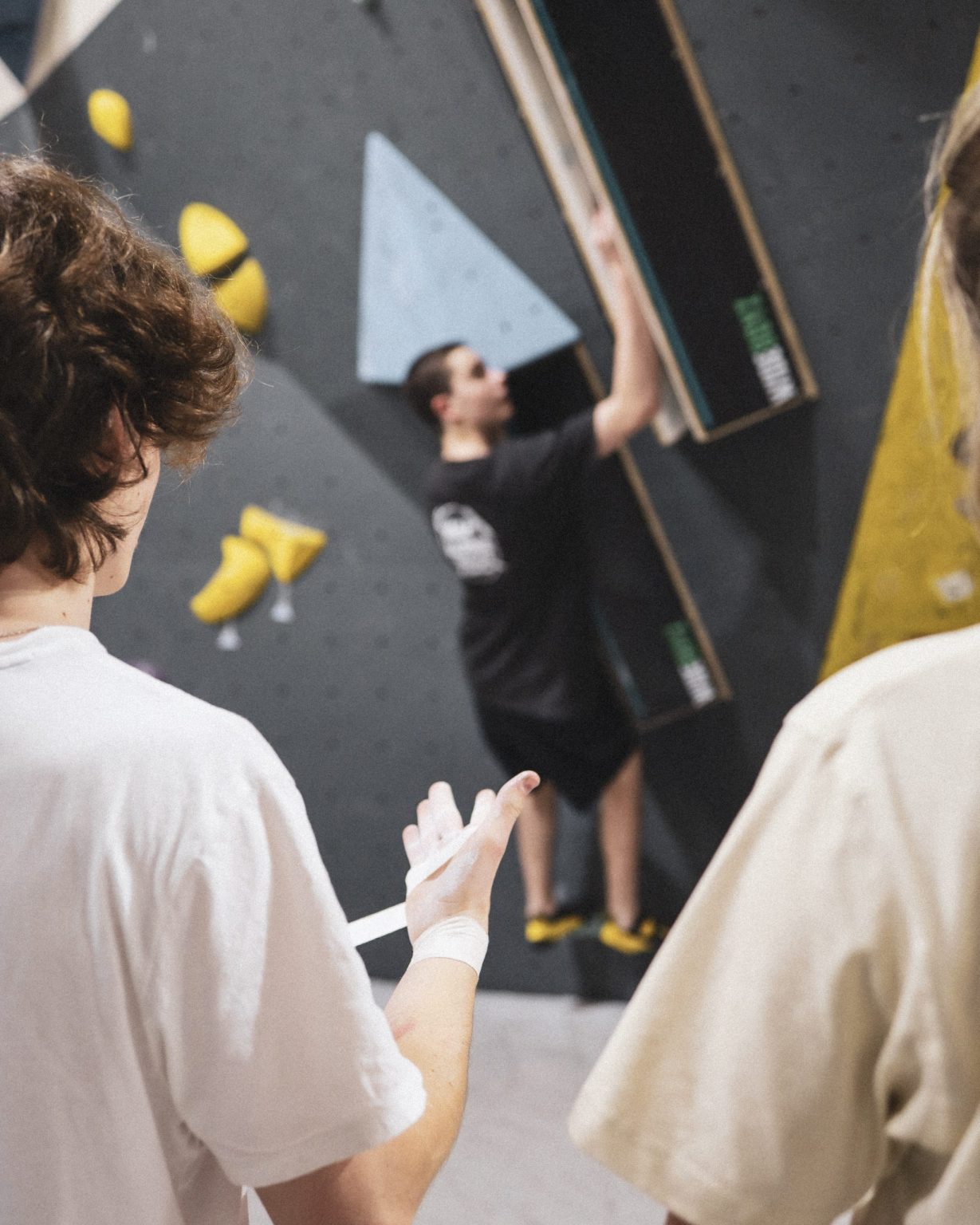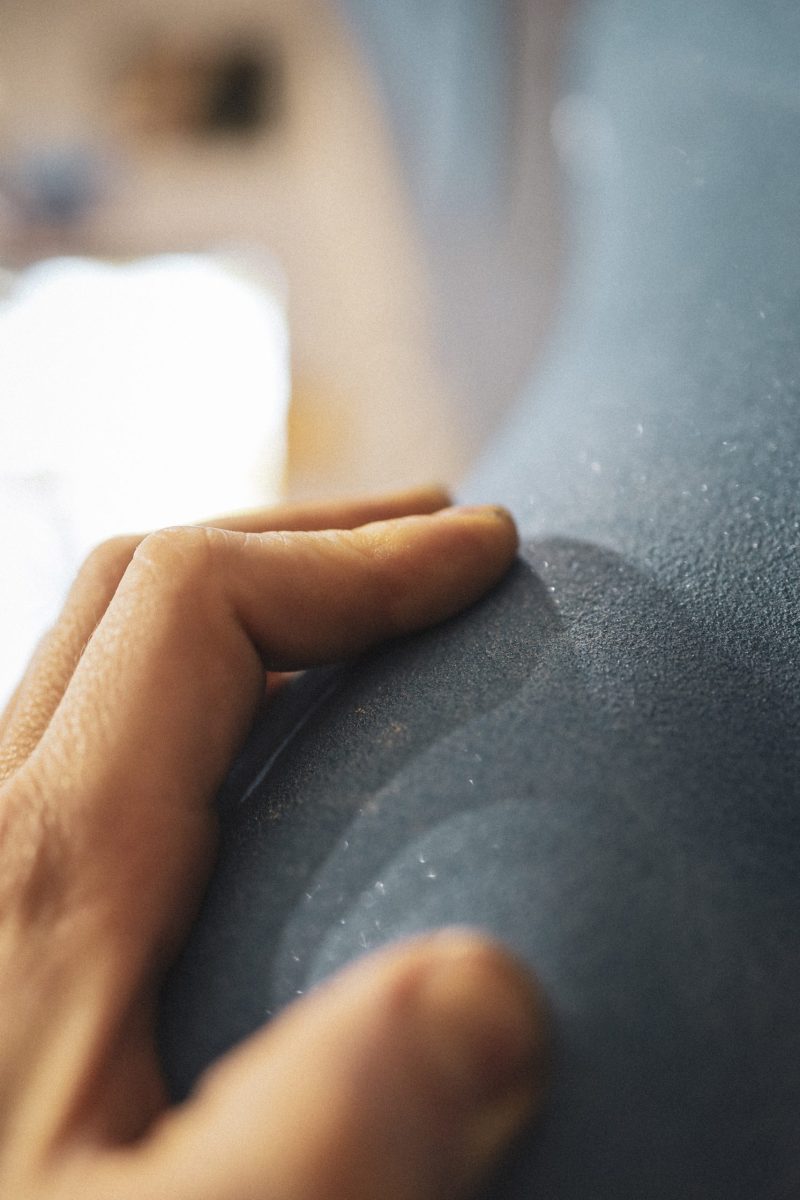From Calluses To Care

Our fingers are the unsung heroes of our climbing escapades, yet they’re often subjected to more wear and tear than anything else. Our skin gets worn out more than our bodies do, and we wait idly for it to recover while our bodies are raring to go.
For anyone looking to improve their climbing, skin care is a crucial investment. Your skin can be the difference between the grade you’re climbing now and the elusive grade above. Healthy skin also means more hours on the wall — we all know that the more often we climb, the stronger we will be. So let’s dive into the world of skin care for climbers, because those flappers and worn-tips deserve some love too.
Maintenance
There are several things to consider when it comes to skin maintenance. Our skin grows best when it has been sanded evenly all over, so that the entire area can grow back at once. Overly thick sections with deep undulations won’t heal fast. Check this every couple of weeks. Ideally, this is done before a rest day to give skin cells time to regenerate. For the sanding part, there are a few options — either sandpaper or electric callus grinder (typically used for feet).
It’s important to keep your skin moisturised. Friction fuels the fun, and overly dry skin can lead to reduced friction on the wall. Moisturise your fingers regularly to maintain elasticity. A climbing-friendly moisturiser can work wonders in preventing skin cracks and keeping your hands supple. We suggest applying Rhino Skin Repair after each session. Climb Skin Hand Cream can also work well to speed up regeneration.
Repair
Perhaps you’ve gone too hard and your fingers require a little TLC. For those battle-scarred moments, keep a stash of healing ointment on hand. It’ll speed up recovery and keep your fingers ready for the next vertical showdown.
In moments of crises, you’ll want a thicker ointment or balm that seals your dermal layer. It’s best to apply this balm before bed so that your skin can heal overnight. A product to keep in your climbing kit is Metolius Climb Hand Repair Balm, or a similar ointment with ingredients like beeswax and shea butter.
If you’re eager for a climb while your skin recovers, consider a session on the Beastmaker wall. These wooden holds are friendlier to tender finger-tips and there are plenty of established routes on the Beastmaker app. If you’re unsure of how to start, have a chat with our experienced staff members.
I think for me it’s recognising when to stop early. Once you get down to those lower layers — where you get purple and you get little corrugations — it takes so long to get it back. If you don’t climb that last session, it tends to grow back quicker. Once you damage the dermal layer, it takes extra long to build back up. And crack climbing is great on skin.
Paul Norris
Performance
It’s a fact (not folklore) that quality skin can add at least one grade to your climbing ability. If your skin has been worry-free for a while, it might be time to consider performance products. These creams toughen the skin barrier and minimise sweat. Rhino Skin Performance is our pick of the bunch. Antihydral — if you can get your mitts on it — can harden skin and limit sweating from your tips for better performance.
We recommend using performance creams sparingly on finger pads (never creases) for that extra edge. Application to finger creases can cause splitting of the skin over time.

Other Concerns (Skin Glossary, Skin Index)
Taping
A preventative method for thin skin. You’ll compromise friction but save some skin, which can help your progress in the long run.
Nicks/Cuts
Shave/sand the rest of the skin down so that the entire area can heal together. Apply a thicker cream overnight to assist skin regeneration.
Flappers
The byproduct of calluses — no calluses means no flappers. Make sure you’re shaving/sanding down any callused areas, and seek out crimpier climbs if you’re overdoing it on juggy holds.
Sweaty Skin
Might be worth investing in Rhino Skin Performance to impede your sweat protein. Use this sparingly on finger pads and not creases. And importantly, refer back to our Chalk Talk article to find your perfect kind of chalk.
Fingernails
The ideal length is flush with fingertips when pressed down against a hold. At this length, you gain a little strength from the downward force of your nails.
Diet (Finger Food)
A well-balanced diet rich in nutrients can enhance your skin’s health. Vitamins A and E are particularly skin-friendly, and a collagen supplement might be worth looking into. Also, hydration is key — ensure you’re drinking plenty of water on a daily basis.
Washing Dishes
Pro climber Daniel Woods is renowned for bypassing this household chore for the sake of his skin. He’s gone as far as showering in rubber gloves to avoid getting his fingers wet. While there might be something to this (and it makes a great excuse to leave the washing up), his level of commitment is your call.
Now that you’ve heard our skin care secrets, it’s time to conquer those crags with the confidence that your hands are as ready as you are. May your grip be ironclad, your sends legendary and your skin always ready for the next ascent.